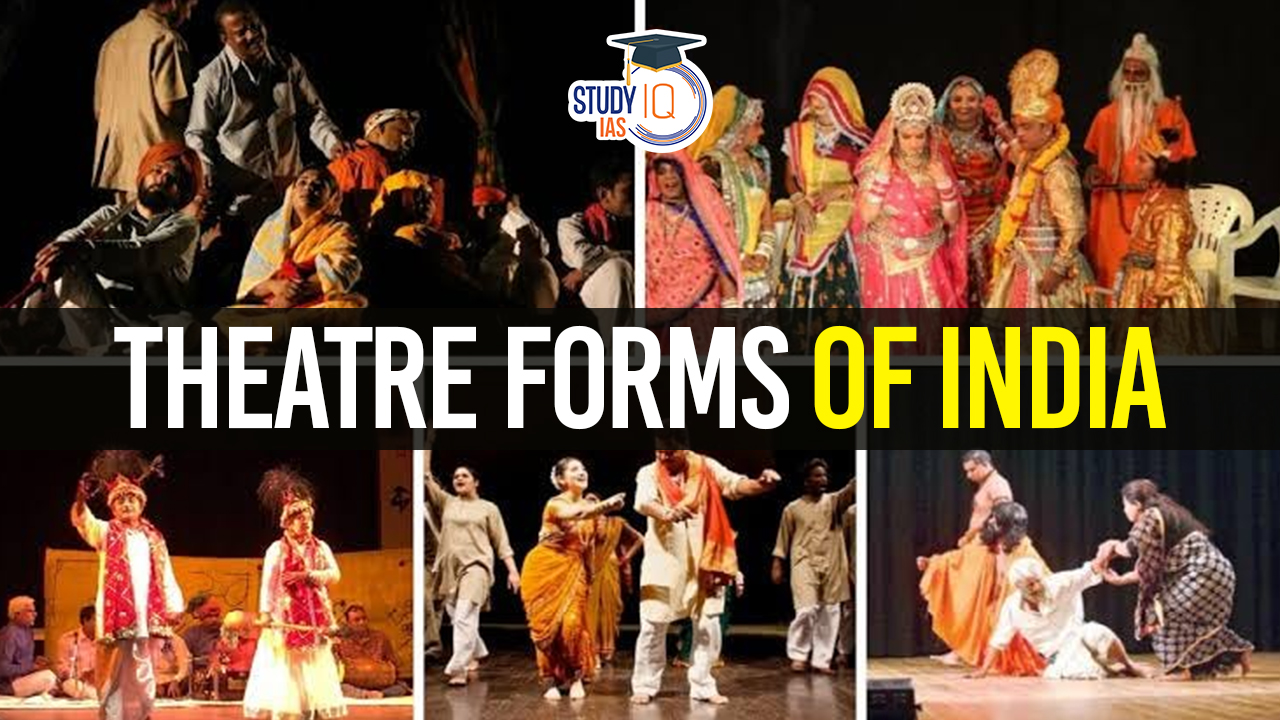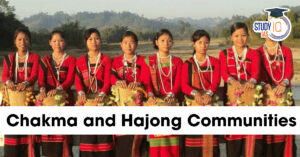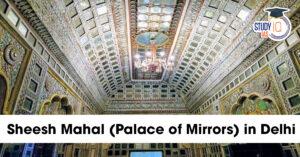Table of Contents
Indian theatre originated as a narrative art form that seamlessly integrated music, dance, and acting into its performances. Theatrical presentations encompassed recitation, dance movements, and musical elements. According to Bharat Muni’s Natya Shastra, Lord Brahma crafted the Natya Veda for the entertainment of the deities, amalgamating components from the four Vedas. The Natya Shastra, dated between 200 BC and 200 AD, stands as the inaugural formal treatise on dramaturgy. This comprehensive work delineates ten categories of plays, spanning from one-act to ten-act productions, and addresses all facets of classical Sanskrit literature.
We’re now on WhatsApp. Click to Join
Evolution of Theatre Forms in India
Sanskrit theatre, emerging subsequent to the establishment of Greek and Roman theatres in the Western world, represents India’s earliest form of classical theatre. According to one narrative, this development was triggered by Alexander the Great’s invasion of India, during which the invading army introduced Greek-style plays that resonated with the native Indian population. While some argue for the precedence of traditional Indian theatre, there is widespread acknowledgment that classical Greek theatre exerted a significant influence.
The excavated remains at Sitabena and Jogimara caves are believed to be among the world’s oldest amphitheatres, illustrating the extensive tradition of theatre within the Indian cultural landscape. This serves as just one example of the longstanding and rich theatrical heritage in India.
Features of Theatre Forms of India
Theatre forms in India are characterized by a multitude of features, reflecting the cultural, religious, and regional diversity of the country. Here are some common features that can be observed across various Indian theatre traditions:
Mythological and Historical Themes
Many Indian theatre forms draw inspiration from Hindu mythology and epics such as the Ramayana and Mahabharata. Historical events and legends are often dramatized in performances, connecting the audience with the rich cultural heritage.
Use of Music and Dance
Music and dance play integral roles in Indian theatre. The performances are often a synthesis of various art forms, combining rhythmic movements, expressive gestures, and melodic compositions. Dance forms like Bharatanatyam, Kathak, and Odissi are often incorporated into theatrical productions.
Colorful Costumes and Makeup
The costumes and makeup in Indian theatre are elaborate and vibrant. Characters are often identified by specific costume designs and makeup styles, helping the audience distinguish between gods, goddesses, heroes, and villains.
Symbolic Gestures and Mudras
Hand gestures, known as mudras, are used extensively in Indian classical dance and theatre. These gestures convey specific meanings and emotions, allowing performers to communicate complex narratives without verbal dialogue.
Regional Diversity
India’s diverse cultural landscape is reflected in its theatre forms. Each region has its unique traditions, styles, and stories. For example, Kathakali in Kerala, Yakshagana in Karnataka, and Bihu in Assam showcase the regional variations in themes, music, and performance styles.
Rasa and Bhava
The concept of Rasa (emotion) and Bhava (mood) from the Natya Shastra is foundational to Indian theatre. Performers aim to evoke specific emotions (Rasas) in the audience through their expressions, movements, and dialogue, creating a profound emotional impact.
Community Participation
Many traditional Indian theatre forms involve community participation. Festivals and religious events often include theatrical performances that engage the local community, fostering a sense of collective identity and cultural continuity.
Narrative Storytelling
Indian theatre often relies on narrative storytelling. Whether through dance, song, or dialogue, the performances aim to narrate stories from mythology, history, or folklore, transmitting cultural values and moral lessons.
Improvisation and Interactivity
Some folk theatre forms, such as Nautanki and Jatra, incorporate improvisation and audience interaction. The performers may engage with the audience, adding an element of spontaneity and creating a more dynamic experience.
Open-air Performances
Many traditional theatre forms in India are performed in open spaces, such as temple courtyards, village squares, or fields. This open-air setting allows for larger audiences and a more inclusive experience.
Spiritual and Ritualistic Elements
Some theatre forms, particularly those associated with temples and religious festivals, have spiritual and ritualistic dimensions. Performances may be considered a form of worship and are conducted with a sense of devotion and reverence.
Social Commentary
Folk theatre forms often include elements of social commentary and satire. They may address contemporary issues, societal norms, and political themes, providing a platform for reflection and discussion within the community.
Classical Sanskrit Theatre
Classical Sanskrit Theatre, referred to as ‘nataka,’ finds its roots in the term ‘nata,’ meaning dancer in Sanskrit. The drama was also known as Rupaka, Drishyakavya, and Preksakavya. Two categories of plays existed in ancient India: Lokadharmi, realistic portrayals of everyday life, and Natyadharmi, traditional plays with stylized storytelling and symbolism. Sanskritic theatre thrived with contributions from Ashvagosha, Kalidasa, Vishakadatta, but declined due to a shift towards poetry, limited creative scope, loss of popularity, and the influence of Muslim rulers.
Folk Theatre
India’s rich legacy of folk theatre, rooted in rural traditions, reflects local culture, beliefs, and practices. In contrast to the urban sophistication of Sanskrit theatre, folk theatre carries a rustic flavor. Initially, it had devotional themes dating from the 15th to 16th centuries but evolved to include love ballads and local hero stories, adopting more secular tones. Folk theatre became a significant means of disseminating societal wisdom post-independence.
Indian Folk Theatre can be categorized into three types: Lokadharmi, Natyadharmi, and Bhavai. These forms showcase a vibrant blend of entertainment and cultural preservation.
Modern Indian Theatre
The introduction of Western proscenium-style theatre to India occurred in the late 18th century during British rule. The first Bengali-language theatre emerged in the 1830s, breaking away from traditional indigenous folk performance genres with the support of wealthy native families. Parsi Theatres gained popularity in Western India from the 1850s to 1920s, producing plays in regional languages like Gujarati and Marathi with vibrant music and backgrounds.
The establishment of the Sangeet Natak Akademi in 1952 aimed to promote performing arts, particularly theatre, fostering its growth in India. The National School of Drama, founded in 1959, contributed significantly to the development of notable theatre figures and the modern Indian theatre scene.
Theatre Forms of India UPSC
Indian theatre, rooted in classical Sanskrit traditions and influenced by ancient texts like Natya Shastra, seamlessly integrates music, dance, and acting. The Natya Shastra, dated 200 BCE to 200 CE, established dramaturgy principles. Sanskrit theatre thrived with Lokadharmi (realistic portrayals) and Natyadharmi (symbolic storytelling). Folk theatre, originating in rural roots, evolved from devotional themes to secular narratives. Indian theatre features vibrant costumes, mudras, regional diversity, Rasa-Bhava principles, community participation, and storytelling. The modern era saw the introduction of Western theatre during British rule, with institutions like Sangeet Natak Akademi and the National School of Drama shaping India’s contemporary theatre landscape.


 Chakma and Hajong Communities: History, ...
Chakma and Hajong Communities: History, ...
 Sheesh Mahal in Delhi Restoration, Archi...
Sheesh Mahal in Delhi Restoration, Archi...
 Bonalu Festival 2025: Date, History, Rit...
Bonalu Festival 2025: Date, History, Rit...





















